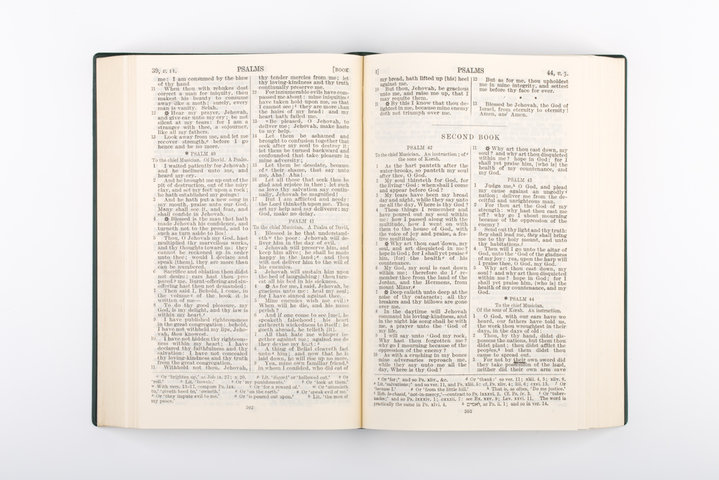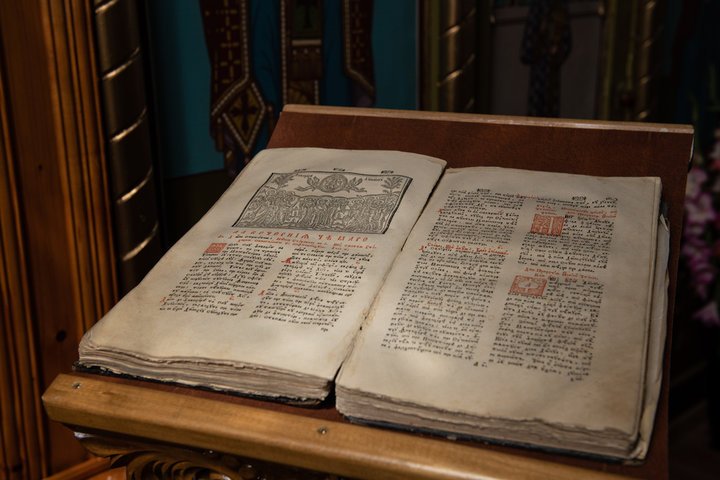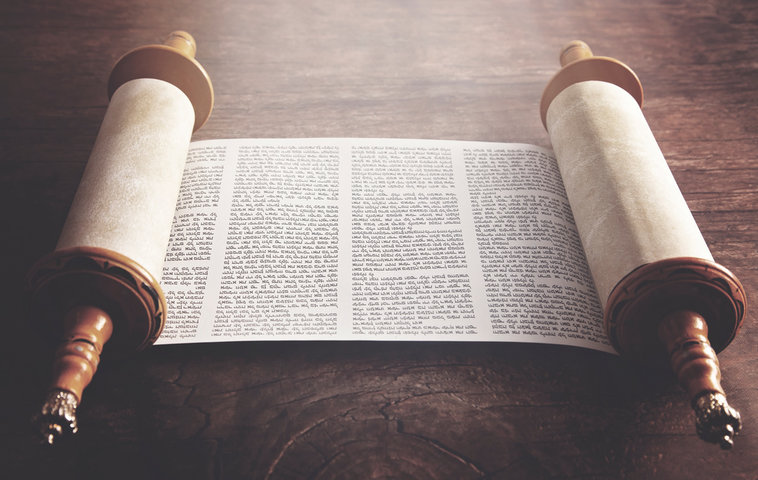
Have you ever stopped to think about why Bible paper is so thin? It’s not just a design choice—there's a practical reason behind it. Bible paper is specially designed to handle the vast amount of text in a compact form, making it both durable and portable.
In this post, we’ll dive into the unique properties of Bible paper, explaining why it’s thinner than most types of paper. You’ll learn how the material contributes to the Bible's readability, longevity, and convenience. Let’s explore why this thin paper is not only functional but also essential in the design of Bibles.
What Makes Bible Paper Different from Regular Paper?
Comparison with Regular Paper
Bible paper is not like the typical paper used in everyday books, such as bond paper or newsprint. While regular paper might be thicker and heavier, Bible paper is specially crafted to be lightweight and durable. One key difference is the paper’s thickness, which is measured in grams per square meter (GSM). Regular paper typically ranges from 70 to 100 GSM, while Bible paper is usually between 25 and 40 GSM. This thinness helps keep Bibles compact and easy to carry without sacrificing readability.
Despite its thinness, Bible paper is designed to be durable. It's built to withstand frequent handling and years of use, so it doesn’t tear easily. Its opacity is another important feature; Bible paper is carefully engineered to minimize show-through, the effect where text from the reverse side of a page is visible. This feature enhances the reading experience, making it easier to focus on the words without distractions.
Materials Used in Bible Paper
Bible paper is made from materials that contribute to its unique qualities. Most Bible paper is wood-free and uncoated, which means it’s made from higher-quality fibers, such as cotton or linen. These fibers make the paper stronger and more durable, which is important for a book that will be handled frequently over many years.
In addition to the fibers, additives like titanium dioxide are used to improve the paper's opacity. Titanium dioxide helps create a paper that doesn’t let too much light pass through, making it easier to read the text. These materials and additives are carefully chosen to strike a balance between strength, thinness, and readability, ensuring that Bible paper serves its purpose well without being overly bulky.
The History and Evolution of Bible Paper
From Ancient Scrolls to Modern Bibles

The journey of Bible paper from ancient scrolls to the modern, thin paper used today is a fascinating one. Below is a brief timeline of how paper evolved and influenced Bible production:
| Period | Material Used | Description |
| Ancient Times | Parchment and Vellum | Bibles were written on animal skins, durable but heavy and bulky. |
| 2nd Century AD | Paper (Invention by Cai Lun) | The invention of paper by Cai Lun in China, making writing materials more affordable and accessible. |
| Middle Ages | Paper | Paper gradually replaced parchment and vellum for religious texts, though still thicker than modern Bible paper. |
| 15th Century | Early Printed Paper | Printing presses were invented, but Bibles were still large and heavy. |
The Rise of Thin Paper
| Period | Paper Type | Key Development |
| 19th Century | India Paper | Introduced to reduce the size and weight of Bibles, making them more portable without sacrificing durability. |
| 20th Century | Thinner Bible Paper | As demand for smaller, more durable Bibles grew, paper became even thinner, making it easier to carry Bibles daily. |
| Modern Day | High-quality Thin Paper | Modern Bibles use high-quality, lightweight paper that is durable, easy to read, and portable, meeting the needs of today’s users. |
This timeline shows how the paper used for Bibles has evolved to meet the needs of portability, readability, and durability. As technology and materials advanced, the thin Bible paper we are familiar with today came to life.
Why Was Thin Paper Chosen for Bibles in the First Place?
Compactness and Portability
Thin paper makes it possible to fit a massive amount of text into a smaller, more portable format. Since Bibles are often carried around, whether for personal study or during worship, this portability is key. Without thin paper, it would be difficult to produce a Bible that could be easily carried in a bag or held comfortably for long reading sessions.
Managing Book Weight and Thickness
A thick Bible with heavy pages would be cumbersome, making it difficult to carry around or handle. Thin paper allows for a lighter weight, ensuring the Bible is still easy to hold, even during extended readings or travel. Without it, the Bible would become too heavy for practical daily use.
Reducing Bulk
The thinner the paper, the less bulky the Bible becomes. Thick paper would cause the book to expand in size, making it unwieldy. A thinner page thickness strikes the perfect balance between durability and ease of handling. This helps to keep the Bible user-friendly without sacrificing too much content in the process.
Benefits of Using Thin Paper in Bibles
Increased Durability
Even though Bible paper is thin, it's specially crafted to be durable. The paper is made from high-quality materials, allowing it to withstand years of use. Whether it's being flipped through frequently or carried around, the paper can handle the wear and tear. This durability ensures that the Bible remains in good condition over time, even with heavy use.
Improved Readability
Thin paper, despite its light weight, actually plays a role in improving readability. The opacity of the paper helps to reduce the show-through effect, where text from the opposite page is visible. This makes reading more comfortable, as the words on the other side won’t distract or blur the text. So, the Bible remains easy on the eyes, even if the pages are thin.
How Thin Bible Paper Affects Readability
Impact on Text Visibility
Improved Text Contrast
Thin paper enhances the contrast between the text and the page, making the words clearer and more legible. This is especially important for small fonts often used in Bibles, as the paper’s transparency can help the ink stand out more.
Difference Between Paper Weights
Paper weights like 25-30gsm are much thinner than heavier papers, such as 36gsm or higher. Thinner papers allow for better readability due to their slightly transparent nature, while thicker paper can offer a more substantial feel but may reduce this contrast.
Managing Show-Through and Ghosting
What is Ghosting (Show-Through)?
Ghosting occurs when text from one side of the page bleeds through to the other side. This is more common with thinner paper, as the ink tends to show through more easily, creating a faint image of the words on the opposite side.
Techniques to Reduce Ghosting
Publishers use techniques like line-matching to reduce ghosting. This method ensures that the lines of text on the front page line up with the blank spaces on the back page, minimizing the visibility of the opposite side’s text. These techniques improve the overall reading experience.
The Different Types of Bible Paper and Their Uses
Bible paper comes in several types, each serving a different purpose. Let’s look at the various types of Bible paper and their unique characteristics.

Free Sheet Paper
Definition and Characteristics
Free sheet paper, often referred to as India paper, is made from long fibers of wood pulp. It’s lightweight, smooth, and durable. Despite being thin, free sheet paper is strong enough to resist tearing, making it an ideal choice for Bibles. The thinness allows for a higher page count without compromising the book’s portability.
Why It's Commonly Used in Bibles
Free sheet paper is popular in Bibles because it’s lightweight yet durable. The paper’s ability to hold ink well without bleeding through makes it perfect for the fine print often found in Bibles. Plus, its smooth texture ensures the text remains sharp and easy to read.
Other Types of Bible Paper
Differences Between Bible Paper, Onionskin, and Other Paper Types
While Bible paper and onionskin are both thin, they have some distinct differences. Onionskin paper is thinner and more fragile, commonly used for light, high-quality writing paper, whereas Bible paper is designed to withstand heavy use. Other paper types like newsprint are not durable enough for Bibles, as they tend to degrade quickly.
How GSM Is Used to Differentiate Paper Types
GSM (grams per square meter) measures the thickness of paper. Higher GSM means thicker paper, while lower GSM indicates thinner paper. For Bibles, the most commonly used papers range from 25 to 40 GSM. Here’s a simple breakdown:
| Paper Type | GSM Range | Characteristics |
| Bible Paper | 25-30gsm | Thin, lightweight, durable |
| Onionskin Paper | 12-20gsm | Very thin, lightweight, delicate |
| Free Sheet Paper | 25-40gsm | Smooth, durable, holds ink well |
Which Type of Paper Is Best for Different Bible Uses?
Choosing the right type of paper for your Bible depends on how you plan to use it. Whether for notetaking, preaching, or reading, the paper plays a big role in the Bible’s functionality. Here’s a look at the best types for each use.
Bible for Notetaking
Why Not All Bibles Are Suitable for Notetaking
Not all Bibles are ideal for writing in due to the issue of show-through. Thinner paper tends to let ink bleed through, making it hard to write on the opposite page without seeing the text. This is particularly annoying when journaling or taking notes.
Recommended Paper Types for Journaling and Writing
If you’re looking to take notes in your Bible, opt for thicker paper. Paper types that are around 36gsm or above provide a good balance of durability and readability. These papers are thick enough to reduce show-through but still light enough to keep the Bible portable. Many journaling Bibles use paper in this range to ensure a smooth writing experience.
Bible for Preaching and Reading
Characteristics of Paper Needed for Preaching Bibles
Preaching Bibles require paper that ensures clear readability, even in low-light conditions. A thicker paper helps make the text stand out more clearly, ensuring that the words are easy to read during sermons. Paper with a higher GSM helps with this, as it also prevents glare, which can be a problem when reading under bright lights.
Balancing Durability and Ease of Use
A preaching Bible needs to strike a balance between durability and ease of use. The paper must be strong enough to withstand frequent handling, but not so thick that it becomes too heavy to carry around. Paper types in the 30-40gsm range are often used for these Bibles, as they provide the right mix of sturdiness, readability, and comfort during use.
The Role of Modern Printing Technology in Bible Paper
Advancements in Paper Coating
How Modern Bible Printing Uses Advanced Technology
Modern printing technology uses innovative paper coatings to make Bible paper more durable while still keeping it thin. These coatings strengthen the paper, ensuring it can withstand frequent use without tearing or becoming fragile. Advanced technologies have also allowed for smoother finishes, which improve readability, even on thin paper.
The Role of Coating and Additives
Coatings and additives play an important role in preventing ink from bleeding through the paper. By using specially engineered coatings, modern Bible paper resists moisture and ink bleed, ensuring the text remains clear and sharp on each page. This allows publishers to use thinner paper without sacrificing the quality of the printed text.
Line-Matching and Printing Precision
Explanation of Line-Matching
Line-matching is a technique used by printers to prevent show-through, a common issue when using thin paper. By aligning the text from one page with the blank space on the other side, printers reduce the chances of text bleeding through. This technique ensures that readers can focus on the content without being distracted by the text from the opposite page.
How It Maintains Thin Paper
Despite using thin paper, line-matching helps preserve the readability of the Bible. The precision of modern printing ensures that the pages stay thin and lightweight, yet still easy to read, without the distracting effect of show-through. This is a key reason why modern Bibles maintain their slim profile while still being functional for readers.
Why Some Bibles Use Thicker Paper
Conclusion
Thin Bible paper is essential for portability, readability, durability, and overall quality. It allows for a compact Bible format without compromising the clarity of the text. The use of modern printing technology ensures longevity and ease of use, balancing the need for both thinness and durability.
Explore different Bible editions to find the paper quality that suits your needs. Whether you prefer journaling or a more lightweight Bible for daily reading, there’s a perfect option for everyone. Start exploring and find the ideal Bible paper for your personal preferences.
FAQs
Why is Bible paper so thin?
The primary reason for Bible paper's thinness is to keep the Bible compact and portable. With over 700,000 words, thin paper allows for a smaller, lightweight format without sacrificing readability.
Does thin Bible paper affect readability?
Thin Bible paper can sometimes cause issues like show-through. However, modern printing techniques like line-matching help prevent this, ensuring text clarity.
What type of Bible paper is best for notetaking?
For notetaking or journaling, thicker paper (around 36gsm or higher) is best. It reduces show-through, providing a better writing experience.



























